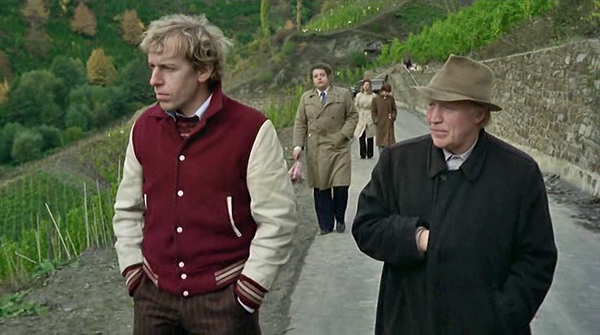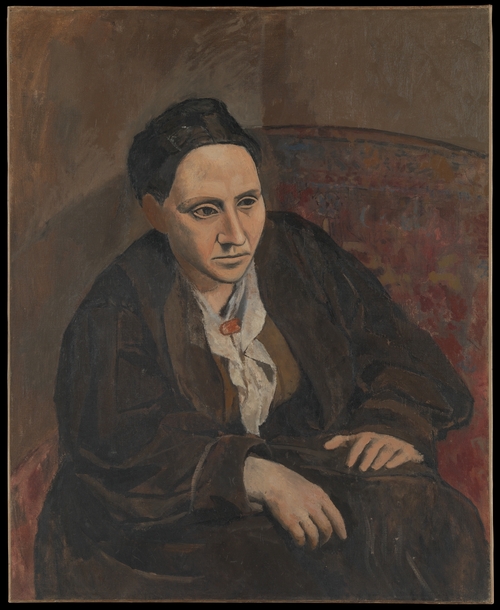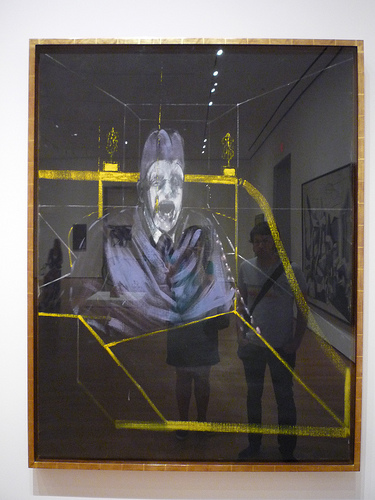Francis Bacon at the Met
Hockney says time and space can’t exist well together in the same 2D surface – how does that relate to Francis Bacon’s works? Does Bacon’s flattening-out equal the inclusion of time as a formal element? Or is time merely implied conceptually through the literal device of multiplication or blurring in order to create the visual continuum of a moving or writhing figure. How to decipher that – when familiarity dampens the impact, when sight is confused by the shifting apparitions of museum-goers reflected in the glass?
It is as if the lone bulb has illuminated everything equally, flattened everything equally. Even the shadow fails to give depth as it oozes and folds arbitrarily over the floor. This is so in the brighter paintings at least, but in the dark paintings, the men in blue. I would say they have the appearance of melting, and how can I use the gerund if a continuation is not implied, the existence perpetuated not only in space but over time? Is this Bacon up to his devices? Or do the paintings succeeded at what they propose?
Using the Picassos as a guide I feel a few things must occur to insert time: first, an implication of space (both deep and shallow) designated pictorially (intrinsic to the subject) but not necessarily reinforced physically, second: a complexity of form and third: a complexity of treatment.
In paintings such as Picasso’s Gertrude Stein which do not contain the cubist faceting, but do employ disparate means of handling paint create a friction between what we believe: that Gertrude is real in the sense that she should be all of a piece and three dimensional – and what we see: that she at times flat, in other places round and soft in atmospheric space, and still others as in her mask like countenance which appears to be almost stuck on. These disparate readings and their desire to exist on one plane embed real time into the painting by forcing the viewer to rectify what we see and what we know. Gertrude’s face painted in one manner or style, and a hand completely other in manner – logically attached, we see an expanse of painted cloth unites the two appendages to a single body. But the clothing serves not so much as covering to a still form, but as a sort of visual terrain.
I am reminded here of the Wim Wenders’ film The Wrong Move. Conversations take place while Wilhelm Meister and his group of companions walk up a high hill. I am suddenly made sensitive to the length of time the conversation takes – because it is manifested in physical space – the physical distance of the walk and the temporal length of the script. And at the top of the hill, both the viewer and the conversants look down the hill, seeing at a distance what had been only recognizable at close range. And there at the bottom – the beginning of the scene reasserts itself as if by magic.

I know this probably seems terribly obvious – film is a temporal medium, but without the option of rewinding the tape we can’t really see back, or see along. But here suddenly we see the entire procession made manifest in space, their effort in speak-walking, the forward thrust and continual motion draw attention to the progress and the pause at the zenith allows us to reflect back on the entire length of the hill and all that was spoken along the way.
In Bacon’s works the literal distortion of Richter – very much a device of the photographic – is less present, rather I see the faceting of the fluctuating point of view more common to Picasso. this is a visual distortion more in keeping with the optical disorientation of drunkenness: the world curling up at its edges, a multiplication of afterimages as one point of view is superimposed over another merely in the fast turn of the head. The more drunk one becomes the longer the two images take to resolve, the longer the transition between what one was looking at a moment ago and what one faces at the present instant. This is not to say that Bacon was a drunkard painter – he said he felt he did not, for the most part, ever paint well under the influence – but that Bacon was interested in ways of seeing. In capturing / deciphering something seen. When looking at quite a number of Bacon’s paintings one becomes aware of the action of focusing and the effort involved.
Why the glass? Bacon preferred his paintings behind glass – an unusual requirement for an oil painting. Why did he feel it necessary? Formally, with the loss of oil and the accompanying shine as the paint sinks into the unprimed canvas, the glass could serve to unite the surface as a varnish does. A kind of extreme varnish, but I have always felt that varnish is a false shine that is only surface. The glass being thicker and a kind of liquid it is perhaps more akin to the surface of a wet painting. The glazing serves to resaturate the color and gloss.
I have always felt that my paintings look best just made – when the paint is still wet – if I had my druthers the paint would stay that way – stay fluid. I always feel like the paintings die a little as they dry, something is lost in the slow exhale of solvent, in the stagnating of the fluid muds. When I went through a gathering phase a few years ago and was painting mostly still-lives I made a number of paintings with eels among other sea creatures. I felt the eels were akin to the paintings: when living they were luminous, but their iridescence faded quickly after they died – the skin lost its translucency. Oyster shells just shucked of their oyster hold the same pearlessence – as do eyes or other damp invaginations of the body – but the shells dull with no little speed when lost the lick of the mollusk.


